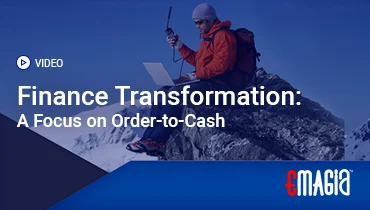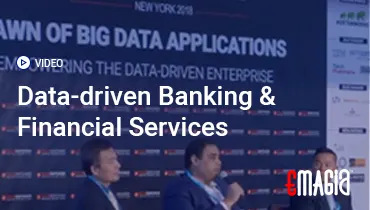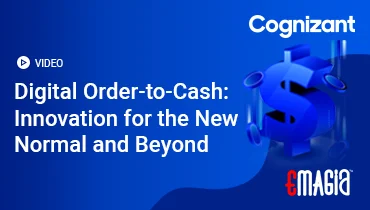In the intricate world of business, every transaction, big or small, culminates in a crucial exchange: the request for payment. This seemingly simple step is formalized by a document that serves as the backbone of financial operations for businesses worldwide. This document is the invoice. For decades, the process of sending these vital financial requests was largely confined to paper, relying on postal services and manual handling. While familiar, this traditional approach often came with inherent inefficiencies, delays, and significant costs.
However, in today’s rapidly evolving digital landscape, the way businesses deliver invoices has undergone a profound transformation. The modern consumer and business buyer expect speed, convenience, and transparency in their financial interactions. Relying solely on a single, outdated method for billing can lead to frustrated customers, delayed payments, and increased operational expenses. This is where the strategic adoption of Alternate Channel Invoicing becomes not just an option, but a strategic imperative. It’s about moving beyond the limitations of paper and embracing diverse, digital methods to deliver invoices.
This comprehensive guide will delve deep into the concept of Alternate Channel Invoicing. We will unravel its precise definition, explore the compelling reasons why businesses are shifting away from traditional methods, and dissect the various modern channels available for invoice delivery. Join us as we illuminate the immense benefits this approach offers – from accelerating cash flow and reducing costs to enhancing customer satisfaction and ensuring financial agility in your Order-to-Cash cycle. By mastering these alternate channels, your business can unlock new levels of efficiency and harmony in its billing processes.
Understanding the Foundation: What is Alternate Channel Invoicing?
To truly embrace this modern approach, we must first define what Alternate Channel Invoicing entails and how it differs from traditional methods, setting the stage for a more efficient financial future.
What is Alternate Channel Invoicing? Defining Modern Invoice Delivery.
Alternate Channel Invoicing refers to the practice of delivering invoices to customers through methods other than traditional physical mail. This encompasses a wide range of digital and electronic channels designed to enhance speed, efficiency, and customer convenience. Instead of a one-size-fits-all approach, it acknowledges that different customers may prefer or require different methods of receiving their bills. It’s about diversifying your invoice delivery methods to meet modern demands.
This strategy moves away from the limitations of a single, often slow and costly, delivery method. It embraces technology to ensure that invoices reach their recipients faster, more securely, and in a format that is easier for them to process, ultimately accelerating the entire payment cycle. It’s a proactive step in optimizing your financial operations.
Why Move Beyond Traditional Paper Invoicing? The Limitations.
For decades, paper invoicing was the standard, but its inherent limitations are increasingly apparent in the digital age. Sticking solely to traditional methods can create significant bottlenecks and costs:
- High Costs: Printing, paper, envelopes, and postage add up, especially for businesses with high invoice volumes. These seemingly small costs can collectively erode profit margins.
- Slow Delivery: Physical mail is inherently slow. Delays in delivery mean delays in payment, directly impacting your Days Sales Outstanding (DSO) and cash flow.
- Environmental Impact: The sheer volume of paper used in traditional invoicing contributes to environmental concerns, which is increasingly a factor for environmentally conscious businesses and customers.
- Prone to Errors and Loss: Manual handling of paper invoices increases the risk of human error in addressing, stuffing, or mailing. Invoices can also get lost in transit, leading to payment delays and disputes.
- Poor Customer Experience: In an era of instant digital communication, waiting for a paper invoice can be frustrating for customers who expect immediate access to their bills.
These limitations highlight why businesses are actively seeking more efficient and customer-friendly invoice delivery methods.
The Paradigm Shift: From Seller-Centric to Customer-Centric Billing.
The move towards Alternate Channel Invoicing represents a fundamental paradigm shift in how businesses approach billing. Traditionally, invoicing was largely seller-centric, dictated by the seller’s internal processes and capabilities. The focus was on getting the bill out, often with little regard for the buyer’s preferences or efficiency.
However, modern businesses understand that the billing process is a critical part of the overall customer experience. A smooth and convenient invoicing process can enhance customer satisfaction and loyalty. Therefore, Alternate Channel Invoicing is inherently customer-centric, aiming to meet the diverse billing preferences of buyers. By offering multiple, convenient ways to receive invoices, businesses foster stronger relationships, reduce friction, and ultimately accelerate payments. This shift impacts the entire order-to-cash cycle, making it more efficient and harmonious.
Key Types of Alternate Channel Invoicing: Diversifying Your Delivery
To effectively implement Alternate Channel Invoicing, businesses must understand the various digital and electronic methods available. Each channel offers unique advantages and caters to different customer needs and technological capabilities.
Electronic Invoicing (E-Invoicing): Beyond Simple Email Attachments.
Electronic invoicing, often referred to as e-invoicing, is the most sophisticated form of digital invoice delivery. It involves the exchange of invoice data directly between the seller’s and buyer’s accounting systems in a structured, machine-readable format (e.g., XML, EDIFACT). This is far more advanced than simply sending a PDF via email.
- Structured Data: The key differentiator is that the invoice data is structured, allowing for automated processing by the buyer’s Accounts Payable (AP) system without manual data entry.
- Benefits: Ensures high data accuracy, significantly reduces manual invoice processing for both parties, accelerates payment cycles, and enhances compliance with e-invoicing mandates in many countries.
- Compliance: Many countries (especially in Europe and Latin America) have mandated e-invoicing for B2B or B2G transactions, making it a compliance necessity for global invoicing.
True e-invoicing is a cornerstone of advanced invoice automation.
Customer Portals: Empowering Self-Service Invoice Access.
Customer portals are secure, dedicated online platforms provided by the seller where customers can log in to view, manage, and pay their invoices. These portals empower customers with self-service capabilities, significantly improving the customer experience.
- 24/7 Access: Customers can access their invoices, statements, and payment history anytime, anywhere.
- Convenient Payment: Often include embedded “pay now” links, allowing customers to make payments directly through the portal using various methods.
- Reduced Inquiries: By providing easy access to information, customer portals reduce the volume of inbound calls and emails to your AR and customer service teams regarding invoice inquiries.
- Enhanced Invoice Communication: Facilitates direct communication regarding specific invoices or disputes within a secure environment.
These portals are a powerful tool for modern digital invoicing.
EDI (Electronic Data Interchange) Invoicing: For Large B2B Relationships.
EDI invoicing is a highly standardized method for the automated, computer-to-computer exchange of business documents, including invoices, between trading partners. It’s typically used in large-scale B2B relationships with high transaction volumes.
- Standardized Format: Uses predefined message formats to ensure seamless communication between disparate systems.
- High Efficiency: Eliminates manual data entry, significantly speeding up invoice processing and reducing errors for both sender and receiver.
- Compliance: Often a requirement for doing business with large retailers or manufacturers.
EDI is a robust solution for ensuring invoice efficiency in complex supply chains.
Email with PDF Attachments: The Most Common Digital Method.
Sending invoices as PDF attachments via email is currently the most widespread form of digital invoicing. It’s a significant step up from paper mail due to its speed and cost-effectiveness.
- Ubiquity and Ease of Use: Almost all businesses and individuals use email, making it a universally accessible delivery method.
- Instant Delivery: Invoices arrive in the recipient’s inbox almost immediately.
- Cost-Effective: Eliminates printing and postage costs.
- Limitations: While convenient, a PDF is an unstructured document. The buyer’s AP team often still needs to manually extract data from the PDF for entry into their system, which can lead to errors and delays compared to true e-invoicing.
Despite its limitations, email with PDF attachments remains a popular and effective invoice delivery method.
Supplier Networks / B2B Networks: Collaborative Platforms.
Supplier networks (also known as B2B networks or procure-to-pay networks) are online platforms that facilitate the exchange of various business documents, including invoices, between a network of buyers and sellers. They often include features for purchase orders, goods receipts, and payment processing.
- Centralized Exchange: Provide a single portal for managing all interactions with trading partners.
- Automated Matching: Often include capabilities for automated matching of invoices against purchase orders and goods receipts.
- Global Reach: Facilitate global invoicing and compliance across different regions.
These networks foster a more collaborative and efficient invoice processing environment.
Benefits of Embracing Alternate Channel Invoicing: A Strategic Advantage
The strategic adoption of Alternate Channel Invoicing delivers a compelling array of advantages that directly impact a business’s financial performance, operational efficiency, and customer relationships. It’s a move that pays dividends across the organization.
Accelerated Cash Flow and Reduced Days Sales Outstanding (DSO).
This is arguably the most significant benefit. Faster invoice delivery methods mean the payment clock starts ticking sooner. When customers receive invoices instantly and have convenient digital payment options, they are more likely to pay promptly. This directly leads to cash flow acceleration and a significant reduction in Days Sales Outstanding (DSO), improving your business’s liquidity and working capital.
Significant Cost Reduction.
Moving away from paper-based invoicing yields substantial cost savings. Businesses can eliminate expenses related to printing, paper, envelopes, and postage. Furthermore, the reduction in manual handling and processing time for both sending and receiving invoices contributes to lower labor costs and improved invoice efficiency. This directly impacts your bottom line.
Enhanced Data Accuracy and Reduced Errors.
Digital and electronic invoicing channels, especially true e-invoicing and EDI, minimize human intervention in data entry. This leads to significantly enhanced data accuracy in your financial records. Fewer errors mean fewer disputes, less time spent on corrections, and more reliable financial reporting, streamlining the entire invoice processing workflow.
Improved Customer Experience and Satisfaction.
In today’s digital world, customers expect convenience. Offering various invoice delivery methods that align with their billing preferences enhances their experience. Providing instant access to invoices via portals or email, coupled with easy payment options, fosters trust and satisfaction. This leads to stronger customer relationships and encourages timely payments.
Stronger Compliance and Audit Trails.
Digital invoices, particularly those exchanged via structured e-invoicing platforms, create robust, immutable audit trails. They are securely transmitted and stored, making it easier to comply with regulatory requirements (especially in regions with e-invoicing mandates) and simplifying internal and external audits. This ensures greater transparency and accountability in your financial operations.
Environmental Sustainability (Paperless Invoicing).
Embracing paperless invoicing significantly reduces paper consumption, contributing to your company’s environmental sustainability goals. This resonates with environmentally conscious customers and stakeholders, enhancing your brand image and corporate social responsibility efforts.
Implementing Alternate Channel Invoicing: Best Practices for a Smooth Transition
While the benefits are clear, successfully implementing Alternate Channel Invoicing requires careful planning and execution. Adhering to best practices ensures a smooth transition and maximizes the advantages for your business and its customers.
Assess Your Customer’s Billing Preferences.
The core of Alternate Channel Invoicing is customer-centricity. Before making a switch, understand how your customers prefer to receive invoices. Conduct surveys, analyze existing communication patterns, and segment your customer base by their preferred invoice delivery methods. Some large customers might require EDI, while small businesses might prefer email or a portal.
Leverage Invoice Automation Software.
To manage multiple channels efficiently, investing in robust invoice automation software or a comprehensive accounts receivable automation platform is crucial. These systems can:
- Automate invoice generation and delivery across various channels.
- Track delivery status and open rates.
- Integrate with payment gateways for seamless payment options.
- Manage customer preferences for delivery.
This centralizes your digital invoicing efforts and ensures invoice efficiency.
Ensure Seamless Integration with ERP/Accounting Systems.
Your Alternate Channel Invoicing solution must integrate seamlessly with your existing Enterprise Resource Planning (ERP) or accounting software. This ensures that invoice data flows automatically from your sales orders or service records into the invoicing system, and then into your Accounts Receivable ledger. Seamless integration is vital for maintaining data accuracy and optimizing the entire order-to-cash cycle.
Prioritize Data Quality and Standardization.
The success of any automated or electronic invoicing system hinges on clean, consistent data. Ensure your customer master data is accurate and up-to-date. Standardize product and service descriptions, pricing, and payment terms. “Garbage in, garbage out” applies strongly here; poor data quality will lead to errors regardless of the delivery channel.
Communicate Changes Clearly to Customers.
When transitioning to new invoice delivery methods, clear and proactive communication with your customers is paramount. Inform them about the change, explain the benefits for them, and provide clear instructions on how to access their invoices and make payments through the new channels. Offer support and a clear point of contact for any questions. This thoughtful invoice communication ensures a smooth adoption.
Monitor and Optimize Performance.
Implementation is not a one-time event. Continuously monitor the performance of your Alternate Channel Invoicing strategy. Track key metrics such as invoice delivery rates, open rates, payment times by channel, and customer feedback. Use these insights to identify areas for improvement, refine your processes, and further optimize your omnichannel invoicing strategy for maximum cash flow acceleration.
Emagia: Revolutionizing Invoice Delivery and the Order-to-Cash Cycle
In the pursuit of modernizing financial operations, Emagia’s AI-powered Autonomous Finance platform stands at the forefront of enabling and enhancing Alternate Channel Invoicing for businesses. While Emagia’s core focus is on revolutionizing Accounts Receivable (AR) and the broader Order-to-Cash (O2C) cycle, its capabilities directly empower businesses to leverage diverse invoice delivery channels effectively, ensuring faster cash collection and superior customer experiences.
Emagia’s integrated platform provides comprehensive accounts receivable solutions that streamline the entire invoicing journey for sellers, from delivery to cash application and dispute resolution:
- Seamless Invoice Delivery & Customer Portals: Emagia’s platform is designed to facilitate efficient invoice delivery through preferred customer channels. While the invoice content originates from a company’s ERP, Emagia can ensure these invoices are presented and delivered via secure, intuitive customer portals. These portals serve as a central hub where customers can access all their invoices, statements, and payment history 24/7. This self-service capability aligns perfectly with Alternate Channel Invoicing, reducing inbound inquiries and enhancing the customer experience with invoices.
- GiaCASH AI: Flawless Cash Application for All Payment Channels: Regardless of how an invoice is delivered or how the payment is made, Emagia’s GiaCASH AI module is critical for the subsequent cash application. It intelligently ingests payment data and remittance advice from virtually any source and format, automatically matching complex incoming payments to outstanding invoices with unparalleled precision. This ensures that the efficiency gained from Alternate Channel Invoicing is not lost in the back office due to manual reconciliation, directly contributing to cash flow acceleration.
- GiaCOLLECT AI: Proactive Collections & Multi-Channel Communication: If an invoice delivered via an alternate channel becomes overdue, Emagia’s GiaCOLLECT AI takes over. It automates personalized payment reminders and dunning sequences across multiple channels (email, SMS, portal notifications). This multi-channel approach ensures consistent and timely follow-up, leveraging the same digital channels used for invoicing to prompt payment and reduce Days Sales Outstanding (DSO). This is a vital component of effective invoice communication.
- GiaDISPUTE AI: Streamlined Dispute Resolution for Invoiced Amounts: Disputes related to invoiced amounts, regardless of the delivery channel, are a common cause of payment delays. Emagia’s GiaDISPUTE AI automates the identification and categorization of these disputes, routing them to the appropriate internal teams for swift resolution. By centralizing all documentation and communication, it ensures that invoice-related issues are resolved quickly, preventing them from impacting cash flow and customer relationships.
- Comprehensive Analytics for Omnichannel Performance: Emagia provides robust analytics and reporting dashboards that offer real-time visibility into your invoicing and collection performance across all channels. Businesses can track payment trends, identify common reasons for disputes, and analyze the effectiveness of their invoice delivery methods. This data empowers finance leaders to continuously refine their omnichannel invoicing strategies for better financial outcomes and greater financial agility.
By providing a truly integrated receivables platform that intelligentizes and automates the processes surrounding invoice delivery and payment, Emagia ensures that your Alternate Channel Invoicing strategy translates directly into accelerated cash flow, reduced administrative burden, and unparalleled financial clarity. It transforms invoice management into a seamless, strategically beneficial component of your Order-to-Cash cycle, driving next generation finance capabilities.
Frequently Asked Questions (FAQs) About Alternate Channel Invoicing
What is the difference between e-invoicing and sending a PDF by email?
E-invoicing involves sending invoice data in a structured, machine-readable format (e.g., XML) directly between the sender’s and receiver’s accounting systems, allowing for automated processing. Sending a PDF by email, while digital, is typically an unstructured document that often requires manual data entry by the recipient, making it less efficient than true e-invoicing.
Are there legal requirements for electronic invoicing?
Yes, many countries, particularly in Europe and Latin America, have legal mandates for electronic invoicing (e-invoicing) for B2B or B2G transactions. These regulations often specify the format, transmission method, and archiving requirements for digital invoices. Businesses engaging in international trade must be aware of and comply with these global invoicing regulations.
How does Alternate Channel Invoicing improve cash flow?
Alternate Channel Invoicing improves cash flow by accelerating the delivery of invoices, which means the payment clock starts ticking sooner. Digital and electronic methods are faster and more reliable than traditional mail. Additionally, many alternate channels (like customer portals) offer embedded “pay now” links, making it easier and quicker for customers to remit payment, leading to cash flow acceleration and reduced Days Sales Outstanding (DSO).
Is it more secure to send invoices via alternate channels?
Yes, generally, sending invoices via secure alternate channels like dedicated customer portals or e-invoicing networks is more secure than traditional email or physical mail. These platforms often employ encryption, access controls, and audit trails to protect sensitive financial data. While email with PDF is common, it’s less secure than structured e-invoicing or portals.
Can all businesses benefit from Alternate Channel Invoicing?
Yes, businesses of all sizes and across various industries can benefit from Alternate Channel Invoicing. While large enterprises might leverage complex EDI or e-invoicing networks, even small businesses can benefit from simply transitioning from paper to email with PDF attachments or utilizing basic invoice automation software with customer portal capabilities. The benefits of cost reduction, efficiency, and improved customer experience are universal.
What is an omnichannel invoicing strategy?
An omnichannel invoicing strategy involves offering customers multiple, integrated invoice delivery methods and payment options, allowing them to choose their preferred channel. It ensures a consistent and seamless experience across all touchpoints, whether they receive an invoice via email, a customer portal, or EDI, and can pay through any convenient method. This approach prioritizes customer experience and flexibility.
How does AP automation relate to Alternate Channel Invoicing?
AP automation (Accounts Payable automation) is the buyer’s side of the equation. Alternate Channel Invoicing (from the seller’s side) directly feeds into the buyer’s AP automation. When sellers send invoices via electronic channels (especially true e-invoicing or EDI), it enables the buyer’s AP system to automatically ingest and process the invoice data, significantly streamlining their invoice processing, reducing manual effort, and enhancing data accuracy for both parties.
Conclusion: The Strategic Imperative of Mastering Alternate Channel Invoicing
In the dynamic rhythm of modern business, the efficiency of your invoicing process is paramount to financial health and customer satisfaction. The era of relying solely on traditional paper invoices is rapidly fading, replaced by the strategic imperative of Alternate Channel Invoicing.
By embracing diverse digital and electronic delivery methods—from sophisticated e-invoicing and secure customer portals to efficient email delivery—businesses can unlock a cascade of benefits. This includes accelerated cash flow, significant cost reductions, enhanced data accuracy, and a vastly improved customer experience. Leveraging advanced invoice automation software is key to implementing these channels seamlessly, ensuring that your omnichannel invoicing strategy drives both operational excellence and financial agility. Mastering Alternate Channel Invoicing is not just about sending bills; it’s about building a more efficient, customer-centric, and financially resilient future for your organization.



